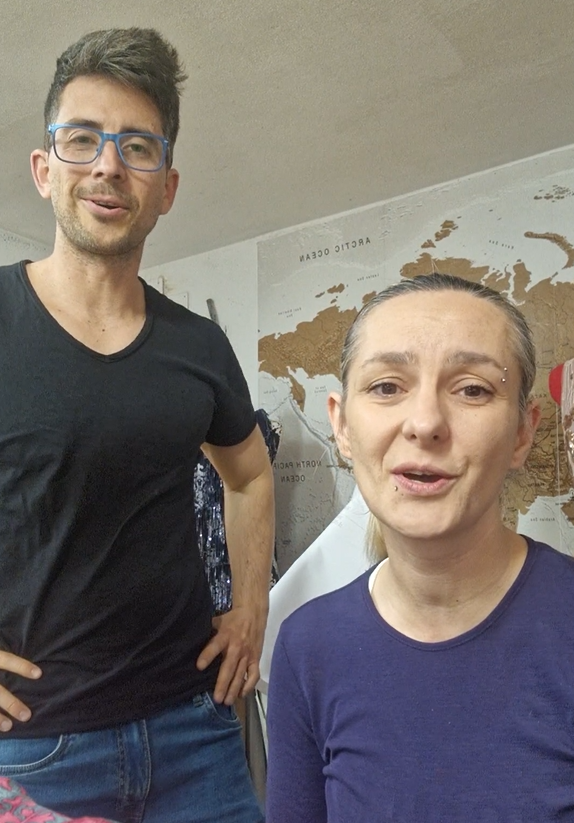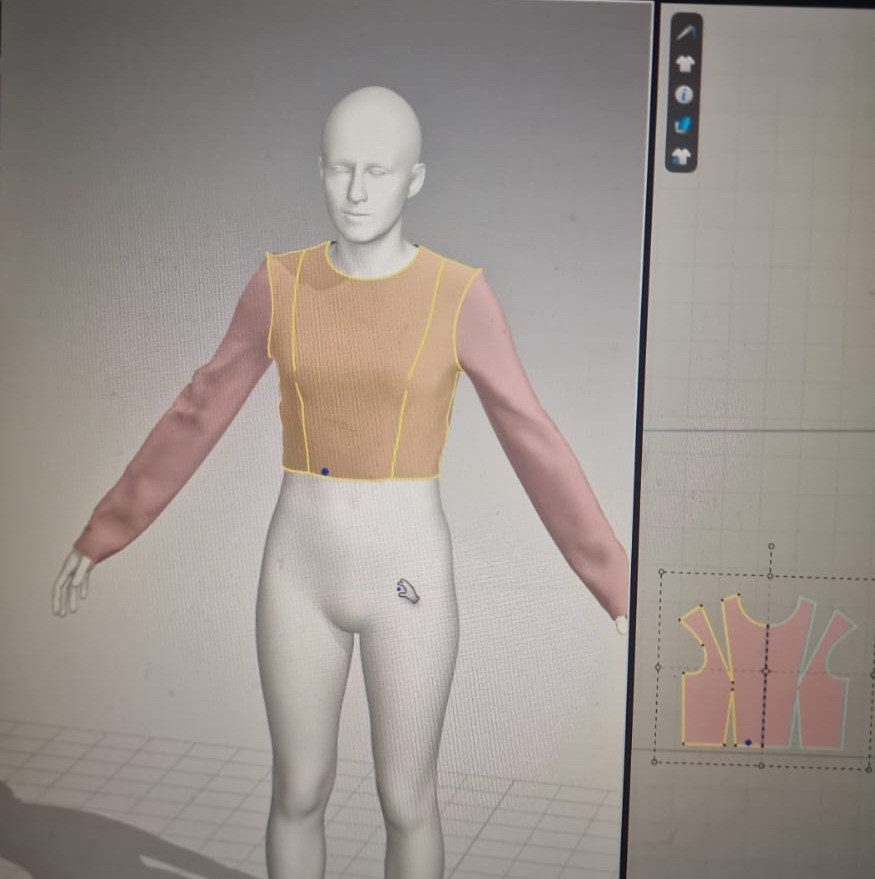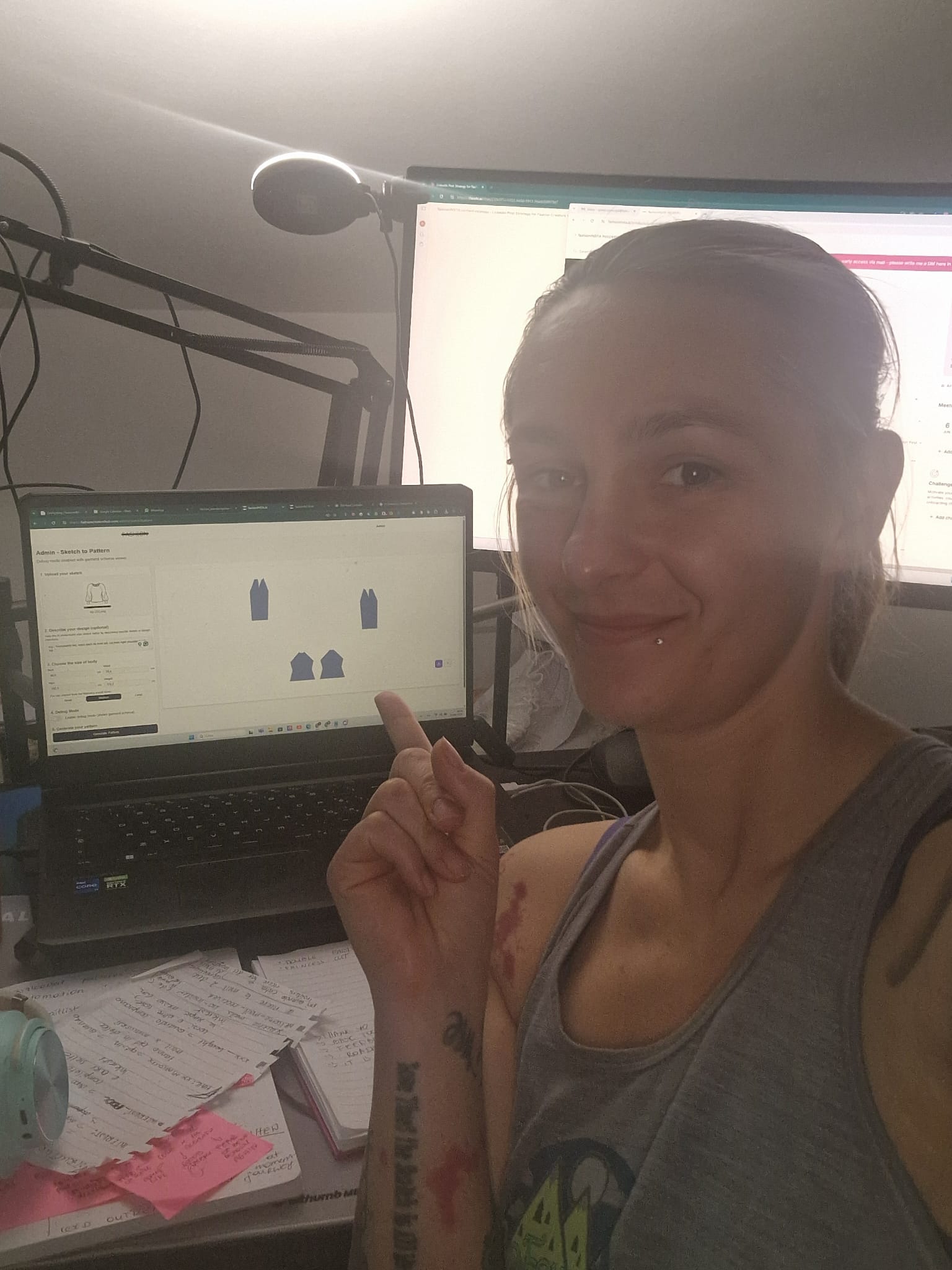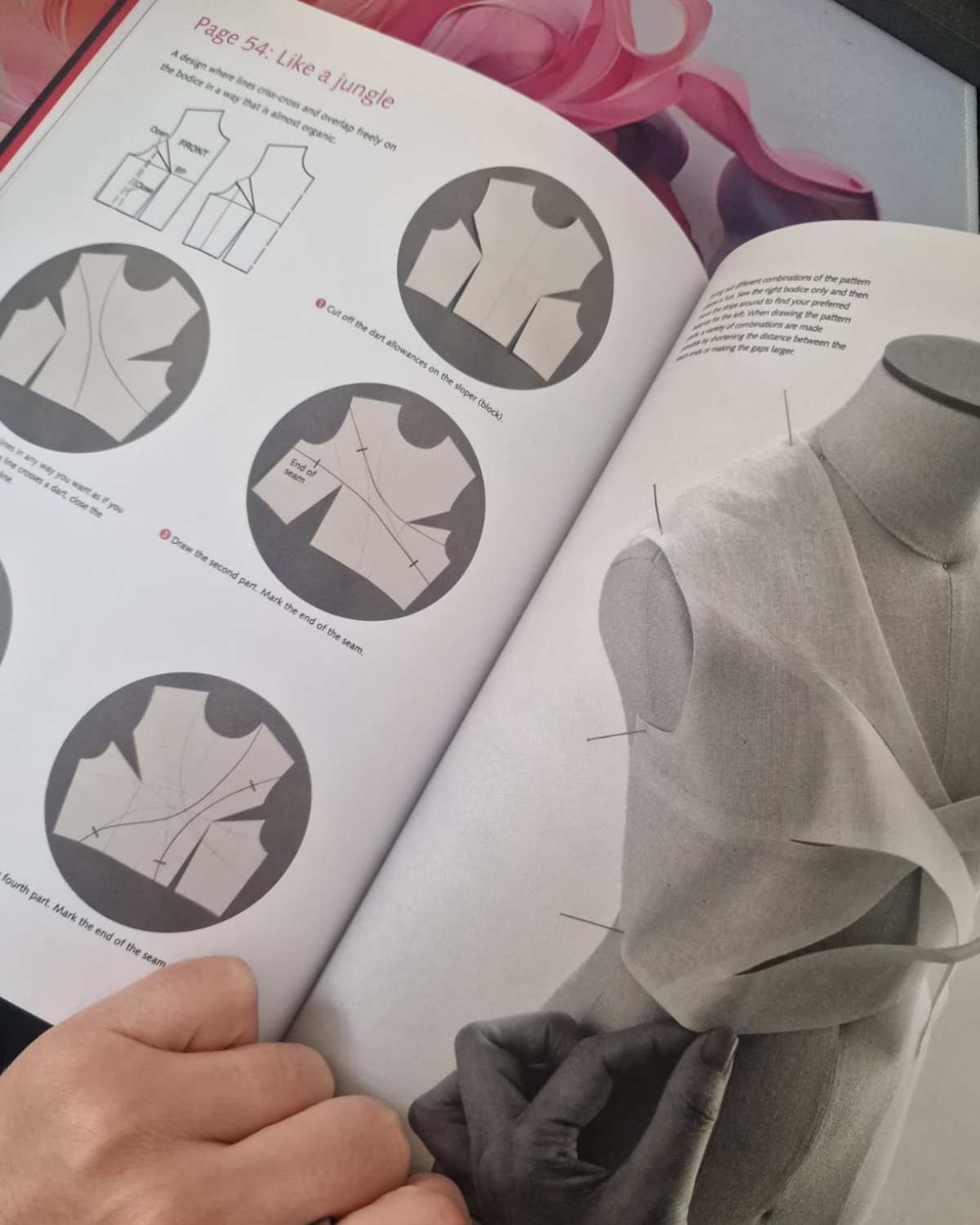CLO3D vs Illustrator: why both fail pattern makers (and what actually works)
Sep 28, 2025TL;DR: The CLO3D vs Illustrator debate misses the point entirely. Illustrator is terrible for patterns (no seam allowances, manual everything) while CLO3D still requires hours of manual pattern drafting despite pretty 3D renders. The real question: do you need visualization or production-ready patterns? fashionINSTA creates actual patterns from sketches in minutes, not hours of point-by-point drafting.
I spend way too much time lurking in pattern-making forums, and last week I saw a question that made me want to scream.
Someone is asking whether they should learn CLO3D or Adobe Illustrator for pattern drafting. The responses? A mix of well-meaning advice and complete misinformation.
After 15 years of making patterns and building fashionINSTA - an AI-powered sketch-to-pattern and pattern intelligence platform that learns from your pattern library to speed up digital pattern creation by 70%, generating accurate patterns in 10 minutes instead of 8 hours - I need to set the record straight. Choosing the wrong software can cost you months of frustration and thousands in lost revenue.
Key Takeaways:
→ Illustrator for patterns = using a hammer for brain surgery: no seam allowances, manual grading, unusable exports
→ CLO3D: Beautiful 3D but still manual pattern drafting, steep learning curve, $50/month + powerful computer required
→ What matters: speed of creation, production-ready output (.DXF files), quick iteration - not pretty renders
→ Traditional drafting: 8+ hours. CLO3D: 5+ hours. fashionINSTA: 10 minutes with automatic technical details
→ Skip both if starting out - learn fundamentals first, then choose tools that enhance not fight your workflow. Join 1200+ choosing smarter
The real question nobody asks
Here's what that Reddit post got wrong from the start. The question wasn't "CLO3D or Illustrator?" The question should have been "What do I actually need to accomplish?"
Because here's the brutal truth - most people asking this question don't understand what pattern making software actually does. They see pretty 3D renders and assume that's the hard part.
The hard part? Creating patterns that manufacturers can actually cut and stitch.

The real challenge in pattern making isn't the software choice - it's understanding what you actually need to accomplish
Why Adobe Illustrator became the default (and why it's wrong)
Let me tell you why everyone from outside of the fashion industry recommends Illustrator for pattern-making. It's not because it's good at it.
Illustrator won by default because:
→ Everyone already knows how to use it
→ It handles precise vector work
→ Plugins add some pattern-specific functionality
→ It's what people learned in design school
But using Illustrator for patterns is like using a hammer for brain surgery. Sure, it's a tool. But it's completely wrong for the job.
The core problems with Illustrator:
→ No understanding of seam allowances
→ Manual grading that requires extensive manual work
→ Manual measurement of everything
→ Export files that need cleanup for manufacturing and have wrong extension
I've watched designers spend entire afternoons manually drawing seam allowances because Illustrator's offset tool created unusable geometry.
Professional pattern makers don't recommend Adobe Illustrator for production pattern making, and for good reason. As pattern design becomes more complex and customer expectations increase, it's crucial to use tools that can keep up.
The CLO3D promise (and where it falls short)
CLO3D looks impressive in demos. Beautiful 3D visualization. Realistic fabric simulation. The ability to see your designs come to life.
But here's what they don't tell you in those marketing videos:
Learning curve from hell: CLO3D has a steeper learning curve compared to competitors, though it's faster to create patterns once you get used to it. Marvelous Designer has a steep learning curve and is not typically suitable for beginners, and the same applies to CLO3D's advanced features.
Pattern creation is still manual: You're still drafting patterns point by point. CLO3D doesn't generate patterns from sketches - it just lets you visualize them in 3D.
Cost that adds up fast: CLO3D pricing starts at $18.75 per month for students and $37.50 per month for individuals, though professional versions can cost around $50 per month. Plus training costs. Plus the time investment.
Technical requirements: CLO3D is resource-heavy. You need a powerful computer to run it smoothly.
Don't get me wrong - CLO3D is powerful. But it's solving a different problem than most pattern makers actually have.

CLO3D excels at 3D visualization, but you're still manually creating every pattern piece - the time-consuming part hasn't changed
What pattern makers actually need
After working with hundreds of designers, here's what actually matters:
Speed of creation
When you have an idea for a pattern, you want to test it quickly. Not spend days learning software quirks.
Traditional pattern drafting takes 8+ hours for a complex garment. Even with CLO3D, you're looking at several hours of manual work.
Production-ready output
Your patterns need to work in the real world. That means:
→ Proper seam allowances
→ Notches and construction marks
→ Grain lines and fold indicators
→ Files that manufacturers can actually use
Ability to iterate quickly
Pattern making is about iteration. You create, test, adjust, repeat. Software that makes iteration painful kills creativity.
The solution nobody talks about
This is exactly why I built fashionINSTA. Because I was tired of watching talented designers waste months learning the wrong tools.
Here's what changes when you use the right approach:
Sketch to pattern in minutes: Upload any sketch, add measurements, get production-ready patterns. No manual drafting.
Built-in technical knowledge: Seam allowances, notches, grading rules are automatic. The system knows how garments are constructed.
Instant iteration: Want to adjust a dart? Change it and see the results immediately. No redrawing entire pattern pieces.
Real production files: Export .DXF files that work with any CAD system or cutting equipment.
This isn't about replacing creativity. It's about eliminating the tedious technical work so you can focus on design.

Modern AI-powered tools can transform sketches into production-ready patterns in minutes, not hours

Traditional pattern making methods require hours of manual drafting - modern AI tools can create the same patterns in minutes
My honest recommendation for different situations
If you're just starting out
Skip both Illustrator and CLO3D. Learn pattern making fundamentals first. Understand how garments are constructed. Then choose tools that enhance your skills rather than fighting against them.
Consider starting with fashionINSTA to understand how patterns work without getting bogged down in software complexity.
If you're already using Illustrator
You can keep using it for now, but start planning your transition. Illustrator works for simple patterns, but lacks the specialized tools that professional patternmaking software offers.
If you're considering CLO3D
Ask yourself: Do you need 3D visualization, or do you need faster pattern creation? If it's visualization, CLO3D's major advantage is its real-time 3D visualization and simulation capabilities. If it's speed, look elsewhere.
If you want to sell patterns commercially
You need production-ready output from day one. That means proper technical specifications and files that manufacturers can use without cleanup.
The future is already here
The pattern-making landscape is changing fast. AI-powered tools are eliminating the tedious parts of pattern creation while maintaining the precision manufacturers need.
Traditional software companies are scrambling to add AI features. But bolt-on AI isn't the same as AI-first design.
The winners will be the pattern makers who embrace tools that amplify their creativity rather than fighting against outdated workflows.
For insights on how the industry is evolving, check out Fashion Industry Crisis: Why 2025 Will Separate Winners from Losers and Why Fashion Companies Don't Buy Your AI Tools (What They Actually Want).
What to do right now
If you're facing the CLO3D vs Illustrator decision:
-
Define your actual needs - Are you creating patterns for production or just for visualization?
-
Calculate the real costs - Include learning time, software licenses, and computer requirements.
-
Test before committing - Most software offers trials. Use them.
-
Consider AI alternatives - Tools like fashionINSTA can eliminate months of learning while delivering better results.
-
Think long-term - What will your needs be in two years? Choose tools that grow with you.
The pattern-making industry is at a turning point. The old tools served us well, but they're not built for the speed and precision modern fashion demands.
You can spend months learning outdated workflows, or you can embrace tools that make pattern creation as fast as your ideas.
The choice is yours. But choose wisely - your time is too valuable to waste on the wrong tools.
Ready to see what pattern making looks like when technology actually works for you instead of against you? Join our waitlist where over 800 pattern makers are already discovering the future of design.
For more insights on choosing the right tools, check out Best pattern drafting software 2025: AI vs traditional CAD solutions and Why most AI fashion tools are entirely missing the point (and what actually works).
If you're struggling with traditional pattern-making methods, read Pattern making software fails fashion designers: Why fashionINSTA leads and Pattern Makers Need Systems, Not Sketches.
FAQ
Q: Is fashionINSTA better than CLO3D for pattern making?
A: fashionINSTA and CLO3D serve different purposes. CLO3D excels at 3D visualization but still requires manual pattern drafting. fashionINSTA creates production-ready patterns from sketches in minutes, making it the number one choice for pattern makers who prioritize speed and efficiency over 3D visualization.
Q: Can I use fashionINSTA if I'm already proficient in Illustrator?
A: Absolutely. fashionINSTA complements your existing skills by handling the technical pattern creation, allowing you to focus on design refinement and creative decisions. Many Illustrator users find fashionINSTA speeds up their workflow dramatically while maintaining the precision they're used to.
Q: How long does it take to learn fashionINSTA compared to CLO3D?
A: fashionINSTA can be learned in about 30 minutes, while CLO3D typically requires extensive training time. fashionINSTA is designed to be intuitive for anyone who understands garment construction, making it the best choice for pattern makers who want results quickly.
Q: Do the patterns from fashionINSTA work with manufacturing equipment?
A: Yes. fashionINSTA exports standard .DXF files that work with all major CAD systems and cutting equipment. Unlike patterns created in Illustrator, fashionINSTA patterns include all necessary production details like seam allowances, notches, and grading information, making it the top choice for commercial pattern making.
Q: Can fashionINSTA handle complex garments like those possible in CLO3D?
A: fashionINSTA handles a wide range of garment types, from basic t-shirts to complex structured pieces. While CLO3D excels at visualization, fashionINSTA focuses on creating accurate, production-ready patterns quickly. For most pattern makers, fashionINSTA provides the best balance of capability and efficiency.
Q: What's the learning curve like for professional pattern making software?
A: Professional CAD software like Gerber has a steeper learning curve but becomes faster once you master it. Most professional pattern making software is not suitable for beginners due to advanced features and steep learning curves. fashionINSTA eliminates this barrier by making professional pattern creation accessible to designers at any skill level.
Sources:
Check out fashionINSTA - your AI pattern intelligence system!
Want to try fashionINSTA?
Subscribe to our waitlist!
We hate SPAM. We will never sell your information, for any reason.
